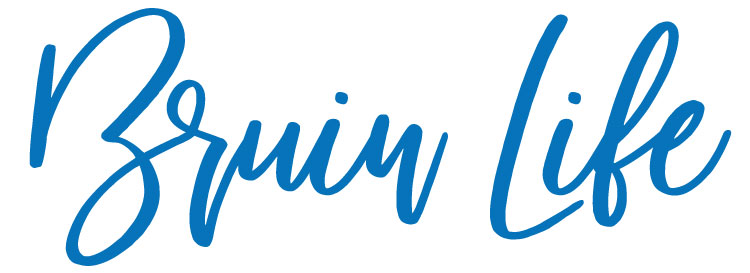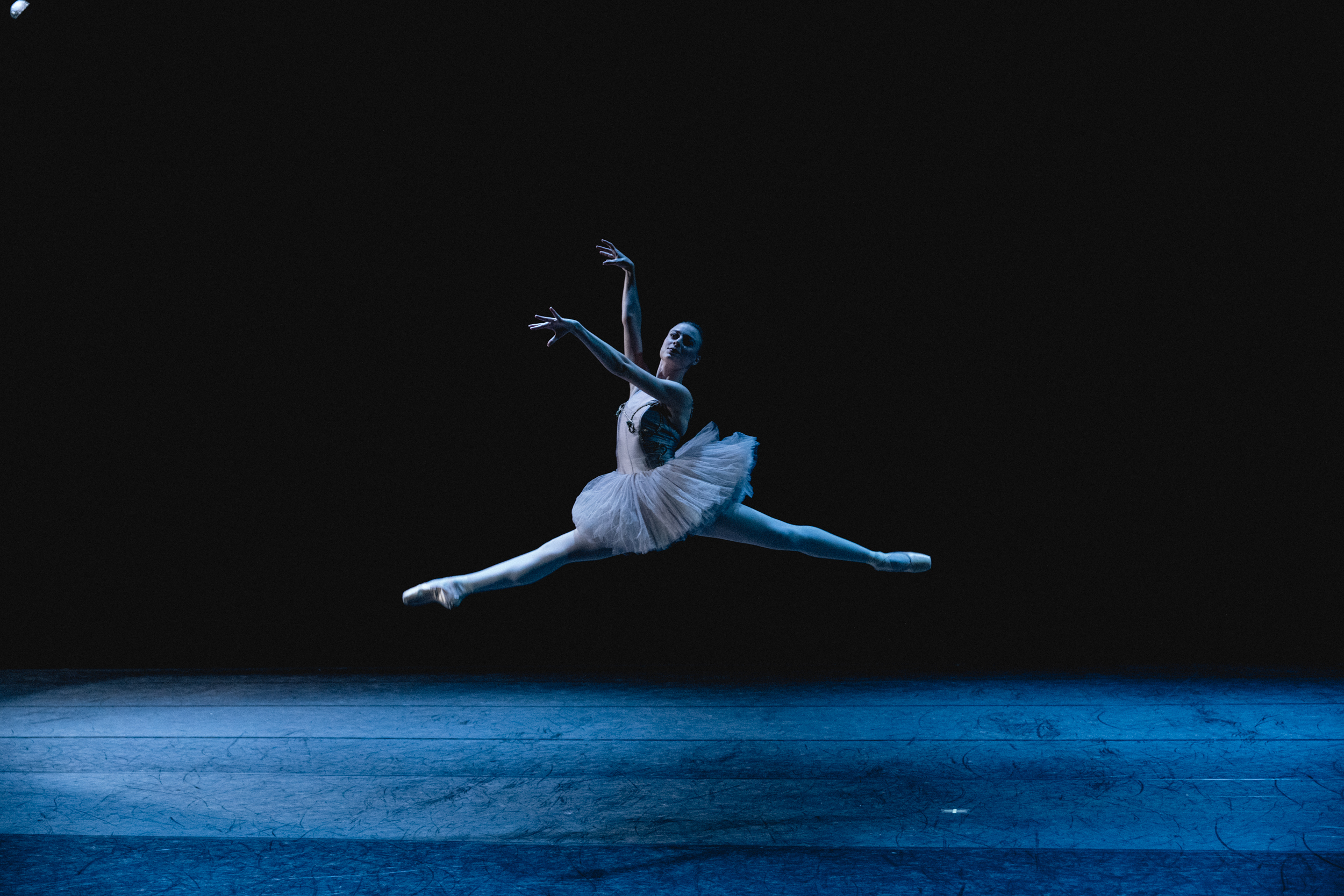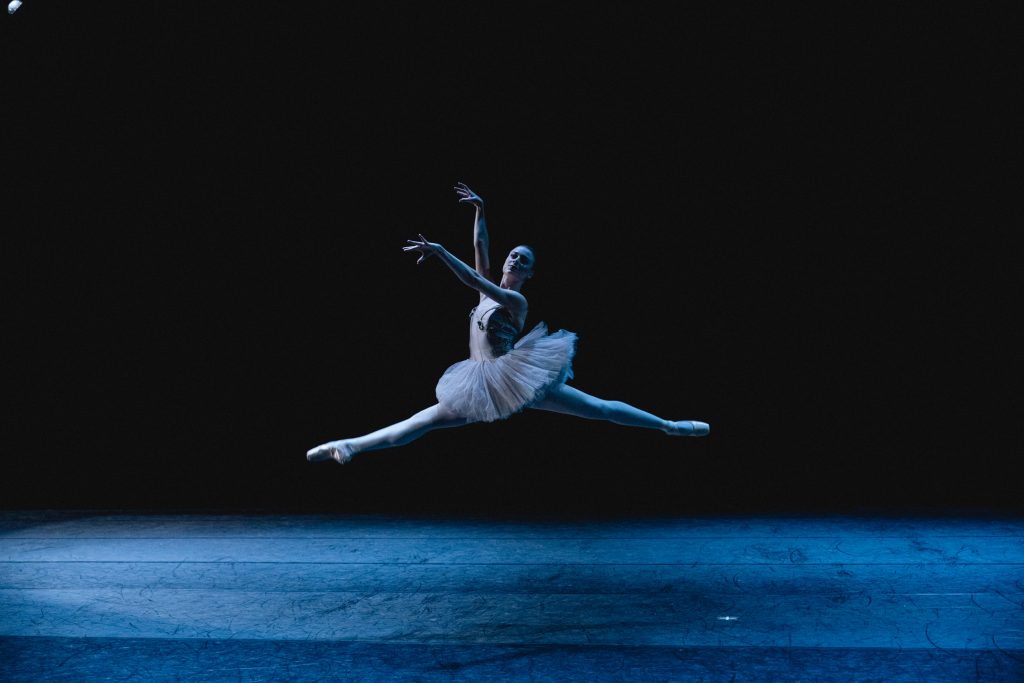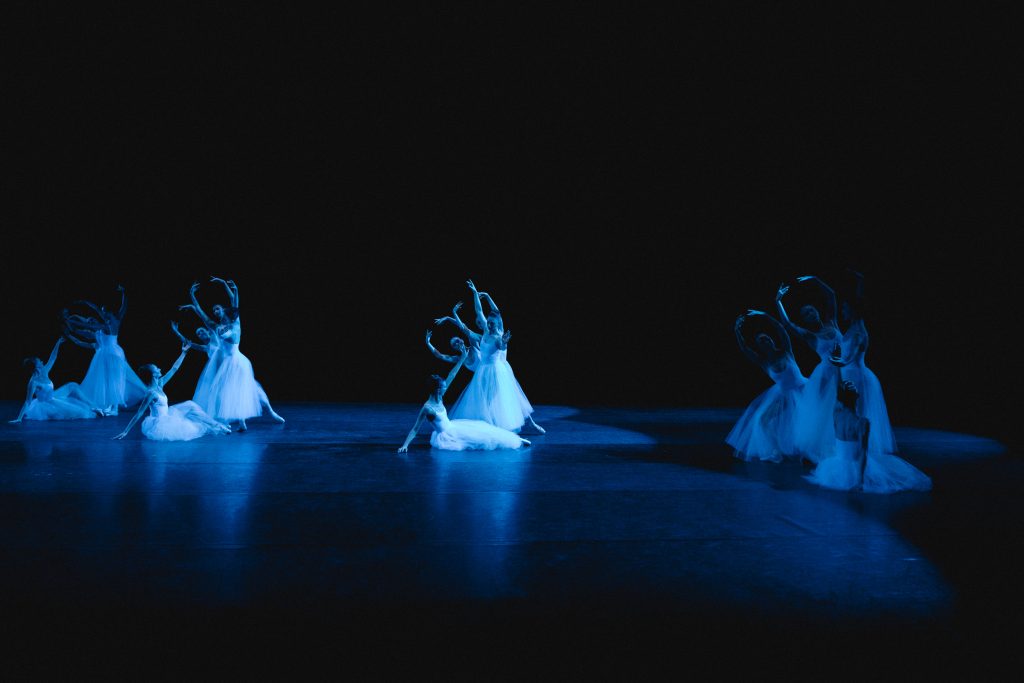Throughout the month of June, American Contemporary Ballet, or ACB, uses dance to showcase the premiering works of two composers – Alma Deutscher’s world premier first ballet, “The Euterpides” and the company premier of George Balanchine’s “Serenade.” The first half performs Deutscher’s composition that tells the story of a mortal who falls in love with the muse of music – Euterpe. Act two follows Balanchine’s work in what is described as a ballet without a plot but full of meaning. While “The Euterpides” and “Serenade” benefit from unique aesthetic elements, its vague narratives and the awkward pacing of the evening left audiences missing a beat.
One element the evening’s showcase vastly benefits from is its venue. A typical image that springs to mind if one were to imagine a ballet performance is that of a grand proscenium with orchestra seats and a high balcony. When viewed in this manner, ballet can quite literally come across as inaccessibly distant because there is such a large gap between the spectator and the performer. ACB combats this issue by placing their double header in a sound stage on the CBS lot.
In light of this, the ballerinas are not dancing on a far off pedestal, but mere feet away from the audience. By bringing the worlds of the viewer and dancer closer together, it makes the entire performance feel more real, adding a tangible sense of verisimilitude.
Another benefit of having the crowd this close to the performers is that it allows them to catch more minute movements that could be lost on a larger stage. The lighting from the wings of the stage quite literally highlighted the physiological framework that went into each and every tendu and arabesque. Additionally, this proximity brought a lot of audience attention and intentionally to the costumes – especially in the second act.
Barbara Karinska designed the outfits for “Serenade” and their stunning simplicity brought a new element to the choreography. The second act sees the female members of the ensemble wearing white dresses with tulle skirts. Due to this material’s light and flowy nature, it visually plays with the dancers’ movements – making it almost play as if it were stop motion. After a dancer’s leg would come down from a high raised leg extension such as a grand battement, their dress would hang in the air just long enough to cast the ghostly silhouette of a phantom limb across the stage. Because of how these tulle skirts played with empty space, they created a distinct visual element for the audience to engage with – a compliment that would not be as accentuated if not for the uniqueness of the venue.
Even though “The Euterpides” and “Serenade” were visual spectacles, the first act’s lack of a distinct narrative affects the stories of both. “The Euterpides” follows a story of Greek myth where a man falls in love with a muse – but the viewer would never know that if they didn’t read the showbill. While the musical swells of lush string orchestration contrasted against light hearted pizzicato manage to inform enough of the emotion quite well, there is no element of the set or costume design to cue audiences into a sense of time or space – people are just kind of dancing for no discernible reason.
“Serenade,” on the other hand, has an opposite yet related issue. Since there is intentionally no narrative to follow, just feelings, it is surprisingly easier to latch onto. Since audiences are not supposed to be transported back to the times of the ancient Greeks and become invested in a love story between mythological figures, they can purely enjoy it as a visual narrative about love and loss – something it does quite well. That said, however, nothing is done to distinguish the first act from the second – with the exception of keen eyed viewers who happened to look behind them and notice the conductor changed. Because of this, these two distinct pieces melded together into a long and confusing tale with little to no sense of plot or character.
Despite this issue being easily solved by reading the show program under the faint light of the pitch black soundstage, it raises a bigger question about how much homework the audience should have to do so that they can fully engage with a non-vocal performance piece.
A related issue with regard to how the evening was split up were the breaks throughout the show. “The Euterpides” is a brisk 20 minutes that ends in a full curtain call for the orchestra and dancers. Then after a roughly five minute pause, the band set up on stage to perform music with no dancer accompaniment. Once completed, the band took their second bow and the house lights came on. While this might signal a clear intermission for more seasoned theater goers, for casual attendees, it left them looking around in confusion as they debated if the night was over – the guy next to me actually asked me, “why is everyone still here,” three minutes into the intermission because he thought the the band’s performance was the end of the second act.
By having a short act break in the middle of “The Euterpides,” it left audience members baffled to see the evening’s entertainment continue with “Serenade” for the true second act. Even after “Serenade” concluded, crowd members were left wondering if there was more to come. This lack of structural clarity in both the narratives and the intermissions created an uncomfortable air of confusion in what should have been a relaxing night at the ballet.
In spite of the artistic talent on display with everything from the music to the dancing to the costume design, the confounding pacing left audiences scratching their heads instead of tapping their feet.
3/5





